Samsung QN900D is undoubtedly the top model for 2024. This television is equipped with Mini LED technology, which provides excellent picture quality – deep blacks and high brightness make films and high-definition content look fantastic. During dynamic scenes in movies, colours and details were exceptionally well presented – especially after calibration. HDR also does not disappoint – bright elements have an excellent level of detail, and the colours are vibrant and natural. One of the strongest points of QN900D is motion smoothness. Supporting a refresh rate of 240 Hz at 4K resolution is rare on the market. Dynamic scenes in sports or games look incredibly smooth, without a trace of blurring. However, it should be added that only users of advanced PCs will fully utilise the capabilities of this feature. An input lag of 9 ms additionally ensures very responsive gameplay, which will certainly please gamers. Tizen operates smoothly and provides access to all popular applications, such as Netflix, YouTube, and Disney+. Moreover, SmartThings features and support for AirPlay allow easy connection of the television with other devices in the home. This is a great solution if you care about comfortably controlling your smart home. An additional perk is Ambient Mode – the television can blend into the décor of the living room by displaying decorative graphics. QN900D not only works well but also looks great. Slim bezels, a central stand, and the One Connect module that allows for cable concealment make the television look elegant. If aesthetics matter to us, it will be hard to find something better. As befits a flagship model, QN900D is simply expensive. Unfortunately, the lack of agreement between Samsung and Dolby Vision may still be a significant downside, especially when watching content on platforms that utilise this format. In the most demanding HDR scenes, it also happens that the contrast is not as perfect as we might expect. And what about 8K resolution? For now, it is difficult to find content that fully utilises it, unless we are enthusiasts for future technology. Samsung QN900D is certainly a television for those who are looking for a top-tier device and are willing to pay for it. However, if we are looking for similar quality at a considerably lower price, it is worth mentioning the equally good QN95D – it offers similar picture quality, without the 8K resolution, which is still more of a curiosity than a standard.
- Matching (Score)
- Our verdict
- TV appearance
- Where to buy
- Contrast and black detail
- HDR effect quality
- Factory color reproduction
- Color reproduction after calibration
- Smoothness of tonal transitions
- Image scaling and smoothness of tonal transitions
- Blur and motion smoothness
- Console compatibility and gaming features
- Input lag
- Compatibility with PC
- Viewing angles
- TV efficiency during daytime
- Details about the matrix
- TV features
- Apps
- Playing files from USB
- Sound
Samsung QN900D Neo QLED 8K vs Sony Bravia 8 MK2
Direct compare
QN900D / Neo QLED / Excellence Line
Bravia 8 II / XR8M


Panel type: LCD VA (wide viewing angle)
Resolution: 7680x4320
System: Tizen
Model year: 2024
Complete the survey to find out the result

Panel type: QD-OLED
Resolution: 3840x2160
System: Google TV
Model year: 2025
Complete the survey to find out the result

Overall rating
7.5
8.5
Movies and series in UHD quality
7.6
9.1
Classic TV, YouTube
7.8
9.4
Sports broadcasts (TV and apps)
7.6
9.0
Gaming on console
9.0
9.3
TV as a computer monitor
8.0
7.6
Watching in bright light
5.0
5.6
Utility functions
7.7
8.9
Apps
8.7
9.6
Sound quality
7.4
8.5
Complete the survey to find out what fits your preferences
Advantages
Great contrast and blacks
High brightness - good HDR effect
The smoothest television in the world - 4K@240Hz
Excellent for gaming - low input lag, many features for gamers
Good digital processing - handles low-quality material well
Advanced operating system - Tizen
Great design - super slim, OneConnect, "floating" central stand
Amazing Contrast and Black Levels
High brightness in HDR content
Great motion fluidity: QD-OLED 120Hz panel
Many features for gamers VRR, ALLM, HGIG, GameBar
Top-notch digital image processing quality (XR Processor)
A multitude of apps on the GoogleTV system
Two remote controls included
Phenomenal sound with DTS audio and Dolby Atmos support
Disadvantages
Price
No Dolby Vision
Only Two HDMI 2.1 Ports: One of the HDMI 2.1 ports is used for eARC (Soundbar)
Cherry Black Effect in Bright Light: The QD-OLED panel causes blacks to lose their depth in strong lighting
Average Brightness in SDR Mode (competition at this price can do a lot more)
No additional smoothness modes for PC gamers
Our verdict
Sony Bravia 8 II is undoubtedly a worthy successor to the A95L – refined, incredibly versatile, and featuring several notable improvements over its predecessor. The quality of the picture, sound, and overall user experience place this model among the top premium televisions of 2025. It is equipment that can charm both cinema enthusiasts and demanding gamers. Among its greatest assets is the nearly perfect image, in which the XR processor subtly yet effectively enhances detail and smoothness without overdoing it in terms of interference with the original material. Additionally, there is the phenomenal Acoustic Surface sound, creating the impression that dialogues and effects come straight from the screen. Google TV operates very smoothly, offering an enormous selection of applications, and additional features – such as the ability to play in the cloud on a PlayStation console or access to Bravia Core – increase the device's value. There is also no shortage of low input lag, variable refresh rate, and full support for modern HDR formats.
Nonetheless, in this barrel of honey, there are a few spoonfuls of tar. The lack of refresh rates above 120 Hz, only two HDMI 2.1 ports, and average performance during the day are downsides that should not exist in a television of this class in 2025. And while for many these will not be flaws that negate the purchase, competition in the super premium segment is becoming increasingly stronger and more uncompromising. Will these shortcomings make it harder for the Bravia 8 II to compete for customers' wallets? That we leave to your judgment, the market… and the sales results. Regardless, the Bravia 8 II is a phenomenal product that would undoubtedly be hard to not recommend.
TV appearance





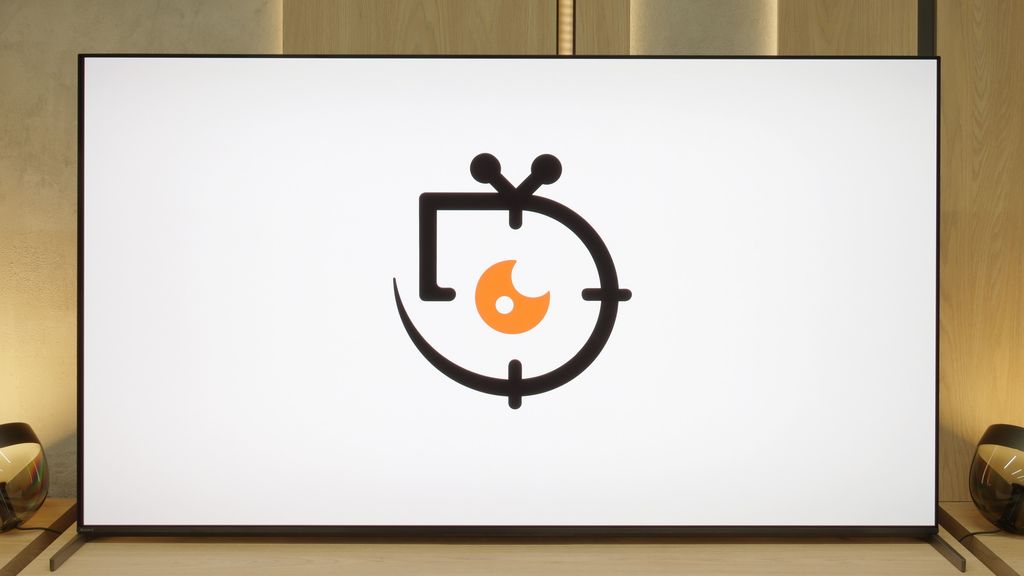
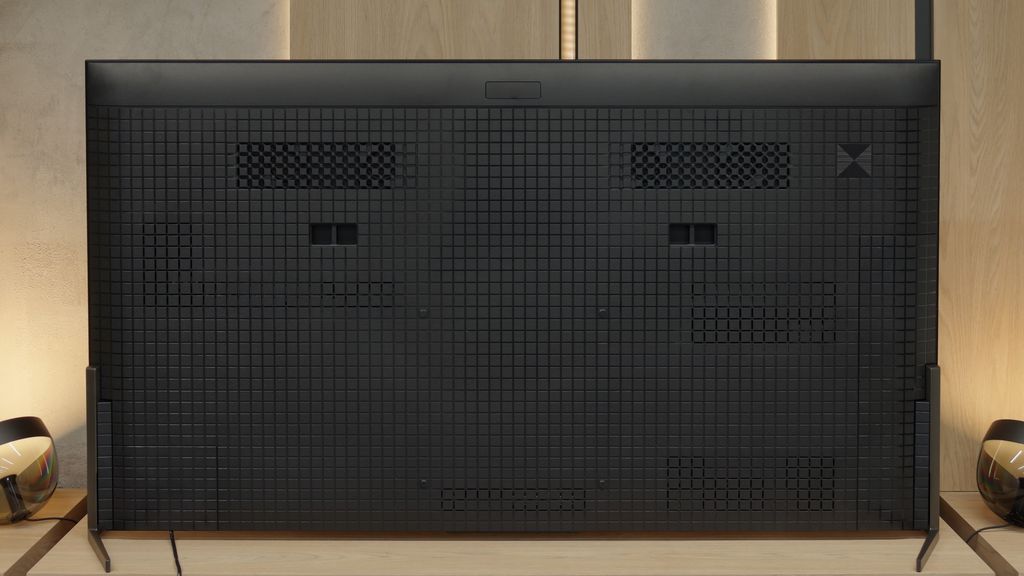

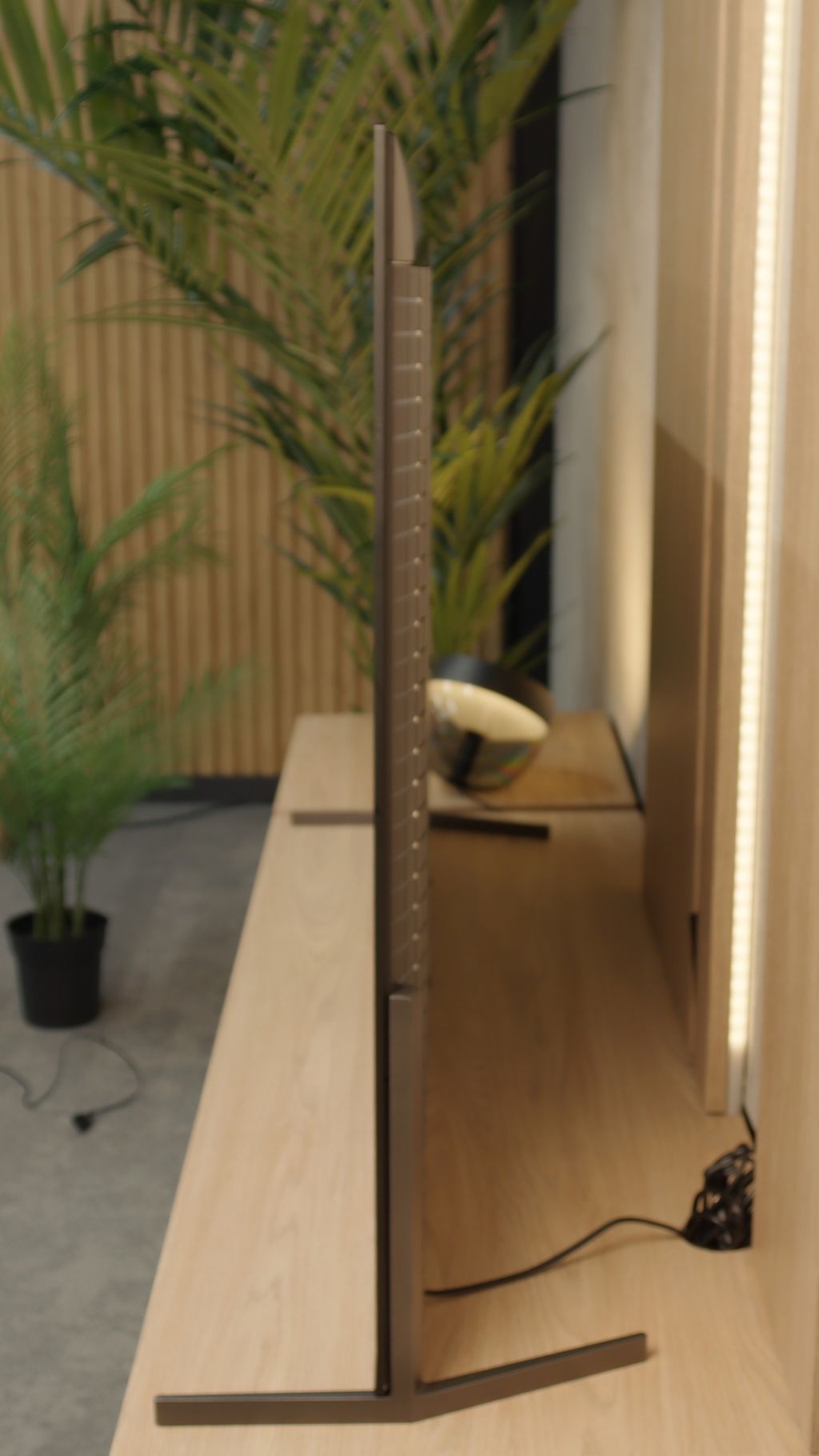
Contrast and black detail
8/10
10/10
Local dimming function: Yes, number of zones: 1344 (56 x 24)
Contrast:

Result
∞:1

Result
205,000:1

Result
89,000:1

Result
7,800:1

Result
4,000:1

Result
∞:1

Result
∞:1

Result
∞:1

Result
∞:1

Result
∞:1
Halo effect and black detail visibility:

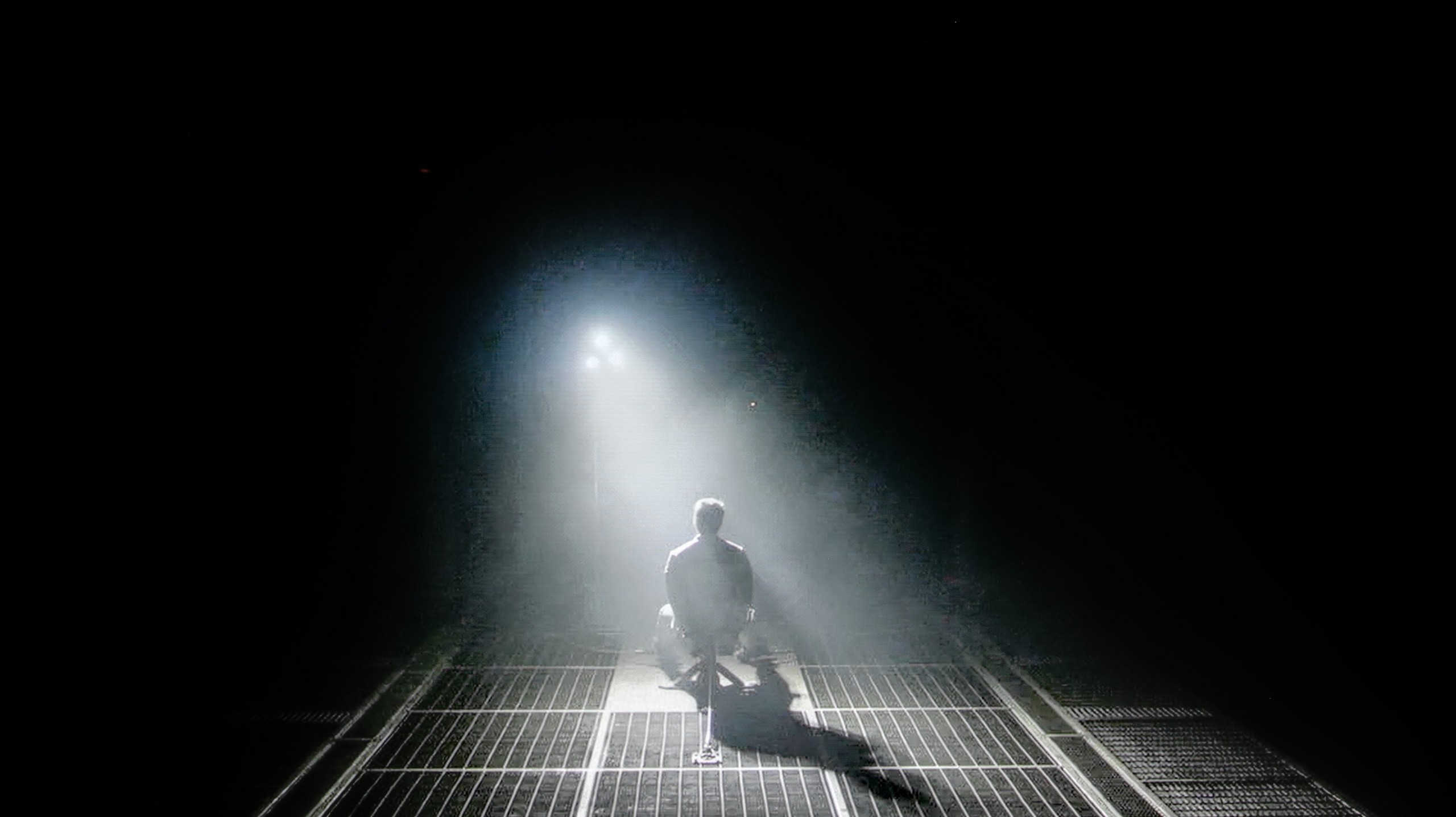
As befits the top model in the series, the Samsung QN900D television is equipped with a VA panel, which in the 65-inch version offers an impressive number of zones – as many as 1344. It is worth noting that larger sizes of this television have an even greater number of zones, which naturally translates to better contrast. During tests in scenes from the film "Oblivion," the QN900D performs excellently. Contrast values close to infinity are truly impressive, allowing for bold comparisons between this television and OLEDs. Unfortunately, like every LCD television, this model also has its limitations. In the case of very small elements, certain inaccuracies are visible, such as halo effects (e.g., in the film "Sicario 2") and occasionally significant dimming of the screen (e.g., in scenes from the film "Gravity"). Despite these imperfections, the Samsung QN900D is undoubtedly one of the best LED televisions available on the market, capable of generating very high contrast.
In terms of black levels and contrast, the Sony Bravia 8 II is absolutely top-notch – and I mean that in every sense of the word. Here we have a QD-OLED panel that naturally offers contrast close to infinity. This means that each pixel can completely turn off, resulting in truly black areas of the image, rather than dark grey or navy. The effect is particularly striking in cinema conditions when the lights in the room are dimmed – at that point, the picture takes on real depth and a filmic quality. The Bravia 8 II also impresses with its light separation in challenging scenes. Sample materials from films like Oblivion demonstrate how precisely the television can separate subtle light sources from the surrounding darkness – without blooming or blurring, which still occurs in the best LCD televisions (even the Bravia 9). Furthermore, bright elements maintain their full intensity even against absolute black. This not only creates a significant visual impact but also translates to better detail reproduction in high-contrast scenes, which is particularly important in HDR content.
HDR effect quality
6.6/10
8.4/10
Luminance measurements in HDR:

Result
1447 nit

Result
665 nit

Result
907 nit

Result
432 nit

Result
793 nit

Result
1922 nit

Result
2034 nit

Result
1999 nit

Result
2026 nit

Result
770 nit
Scene from the movie “Pan” (about 2800 nits)

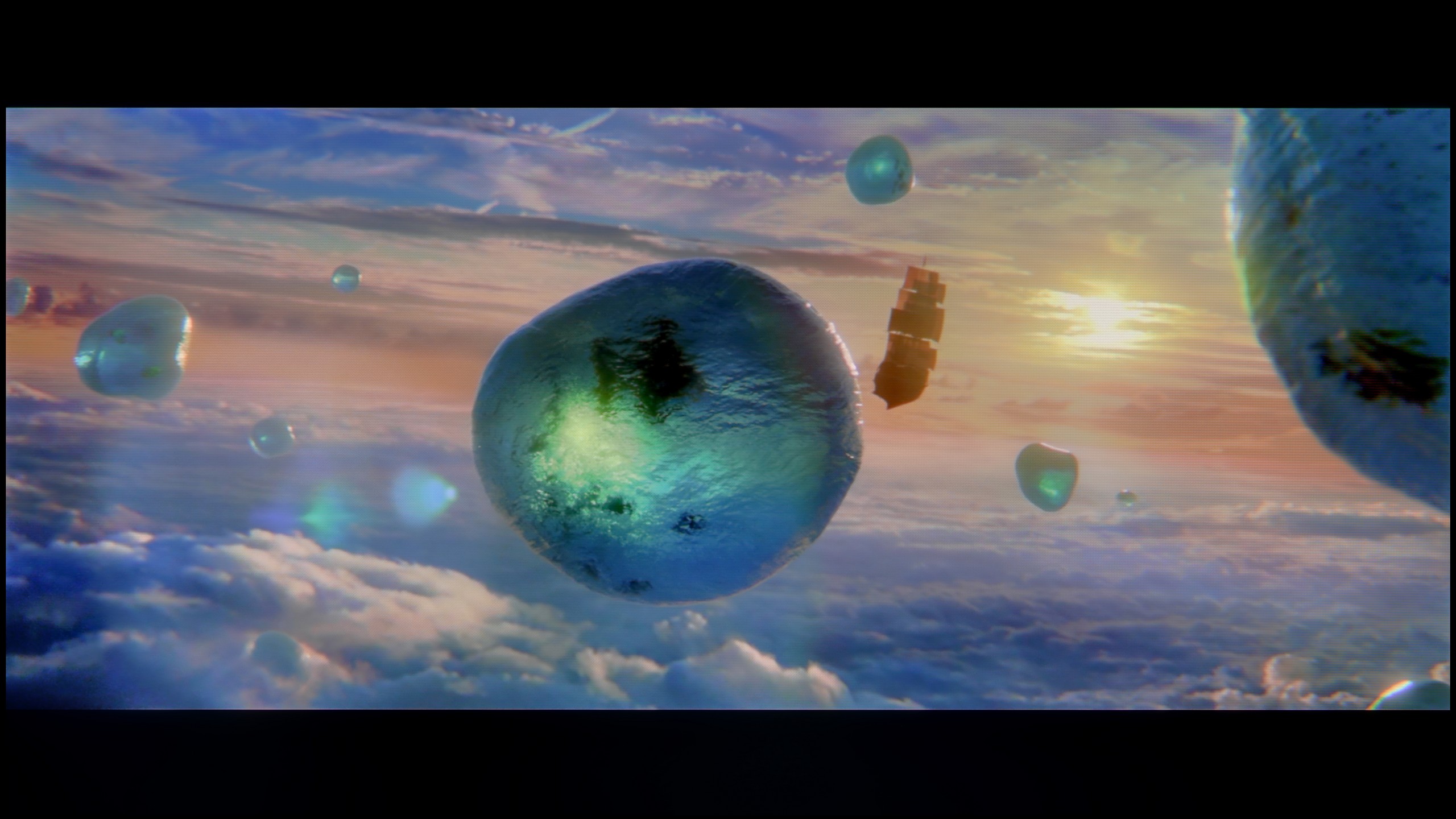
Scene from the movie “Billy Lynn” (about 1100 nits)

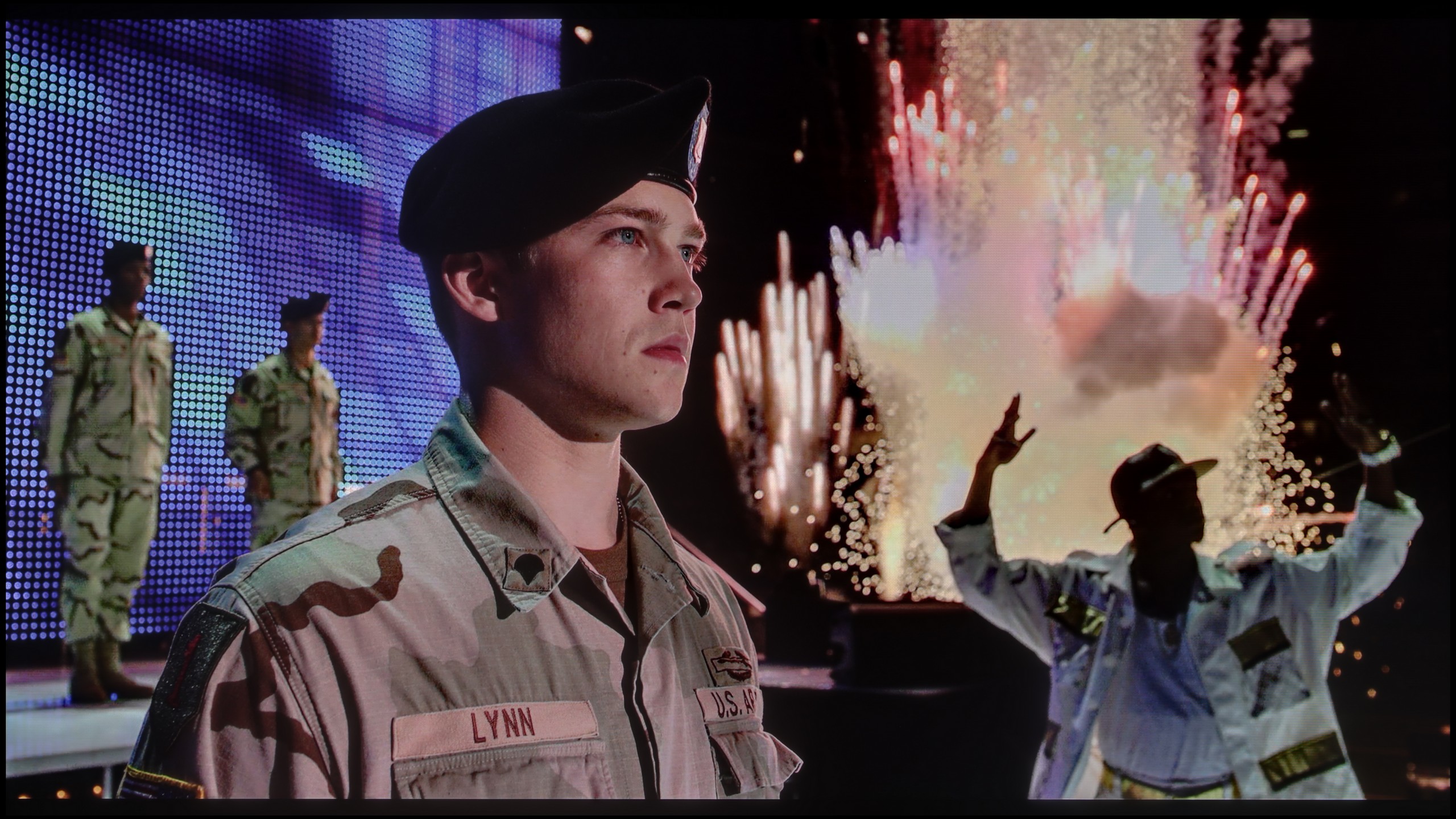
Static HDR10


Dynamic: HDR10+
Dynamic: Dolby Vision


HDR luminance chart:
Sony Bravia 8 MK2
Luminancja HDR
Luminance of RGB colors
Samsung QN900D Neo QLED 8K
Luminancja HDR
Luminance of RGB colors
The Samsung QN900D television demonstrates its high capabilities in light production in synthetic tests without any issues – 1400 nits is truly an impressive figure. It also showcased these capabilities in the first scene from the film "Life of Pi," where we see a brilliant burst of the rising sun. However, due to problems with the dimming algorithm, some issues can be noticed here. In the test scenes from "Sicario 2" and the second scene from "Life of Pi," these values are no longer as high and amount to around 500-600 nits. While this may not be the worst result among Mini LED televisions, one could expect more given the price of the television. Nonetheless, the television deserves praise for covering a wide colour gamut of DCP P3 at 96%. Although there are technologies offering higher values, this result is still satisfactory.
Thanks to the new QD-OLED panel, the Sony Bravia 8 II can achieve astronomically high brightness levels of around 2000 nits, translating into nearly reference-quality for films and series recorded in HDR format. In test materials such as Life of Pi and Sicario 2, the effect is truly captivating – details in bright areas of the image remain perfectly visible, and night scenes enchant with depth and contrast. However, it is not perfect. Compared to its fiercest competitors, the Bravia 8 II shows a noticeable drop in brightness during full-screen, very bright scenes. When comparing maximum peak luminance with 100% white brightness in HDR mode, the Bravia 8 II appears even two or three times dimmer than LG G5 or Samsung S95F models. This was especially evident in a scene from the film The Meg – the screen became noticeably darker than in competing televisions. Despite this shortcoming, the results of the Bravia 8 II still place it among the top of the market. It deserves praise for its absolutely top-tier colour gamut coverage – nearly 100% DCI-P3 and close to 90% BT.2020. These parameters allow for fully extracting the potential of HDR content and providing experiences akin to those in a cinema within the comfort of home.
Factory color reproduction
6.6/10
8/10


Factory Mode
After calibration


Factory Mode
After calibration
The television QN900D offers a Filmmaker mode that has been created with the intention of watching films in the most natural way possible, however, this mode is not without certain flaws. For HD content, the white balance shows a dominance of red and blue colours, causing the image to take on pink hues. In contrast, for 4K HDR content, the situation is the opposite – the decrease in blue and red levels warms up scenes and shifts colours towards yellow tones. This is confirmed by Color Checker tests, which clearly show that colour samples are veering in this direction.
As for brightness and the associated contrast, the gamma is significantly impaired. The biggest issue is a noticeable jump at the beginning of the graph, which indicates that dark details are excessively brightened, resulting in a loss of depth in the darkest areas of the image – this is due to local dimming. For 4K HDR materials, the EOTF curve looks quite good, however, it remains below the reference level, impacting the overall dynamics of the image.
Straight out of the box, the Bravia 8 II performs quite well. In the best IMAX® Enhanced mode, the television is able to render colours in a pleasant and natural way, although “good” doesn’t mean “best in class” here. The white balance definitely needs adjustment – skin tones tend to lean towards slightly pink/cool hues, both in SDR and HDR materials. We also noticed that the characteristic of the EOTF curve reveals a certain tendency to brighten the darkest parts of the image. This is probably due to the manufacturer’s desire to highlight as many details as possible even in deep shadows. Is this a good approach? It’s hard to say definitively, but we know one thing – it is not an ideal solution.
Color reproduction after calibration
8/10
9.2/10

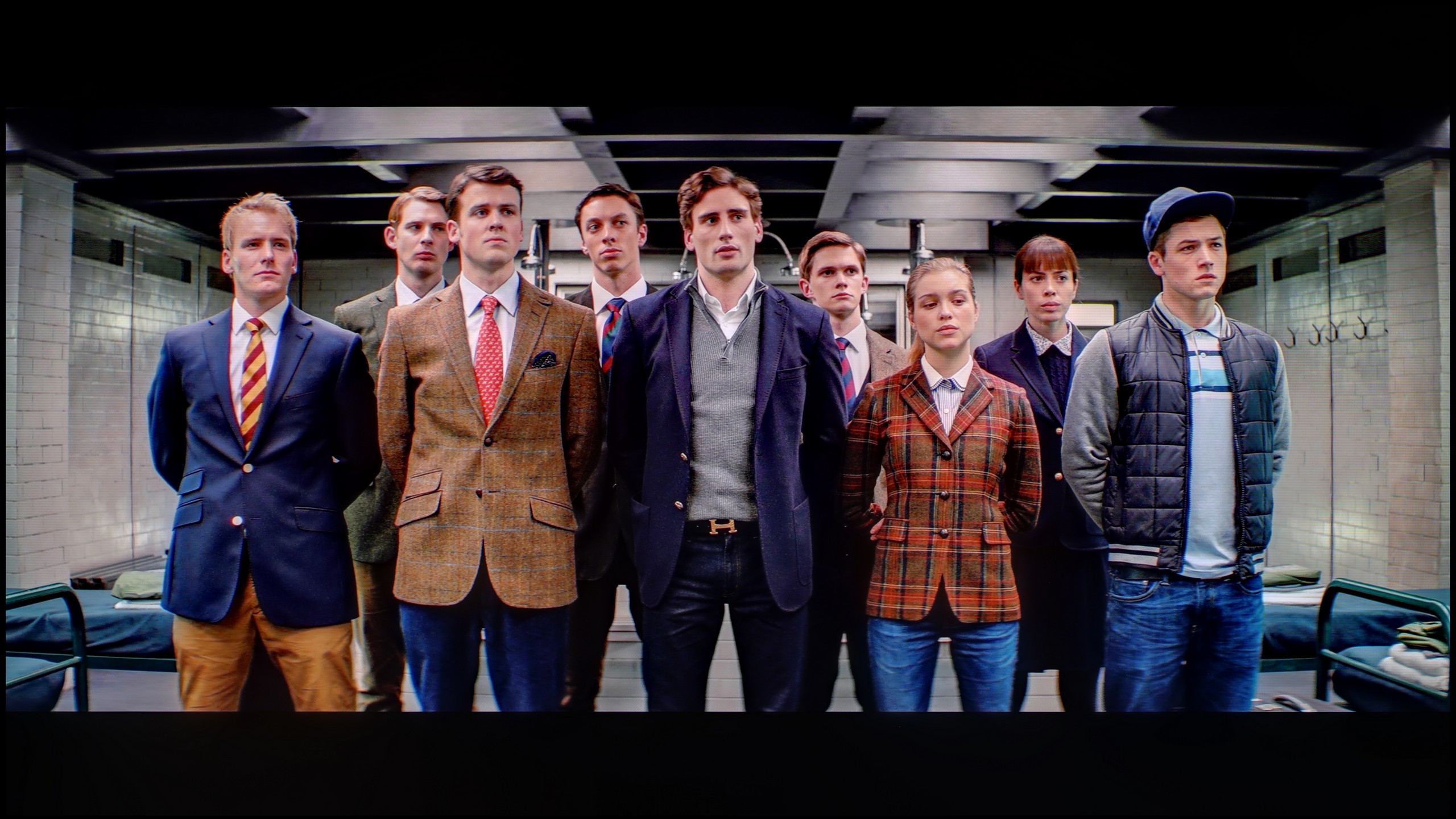

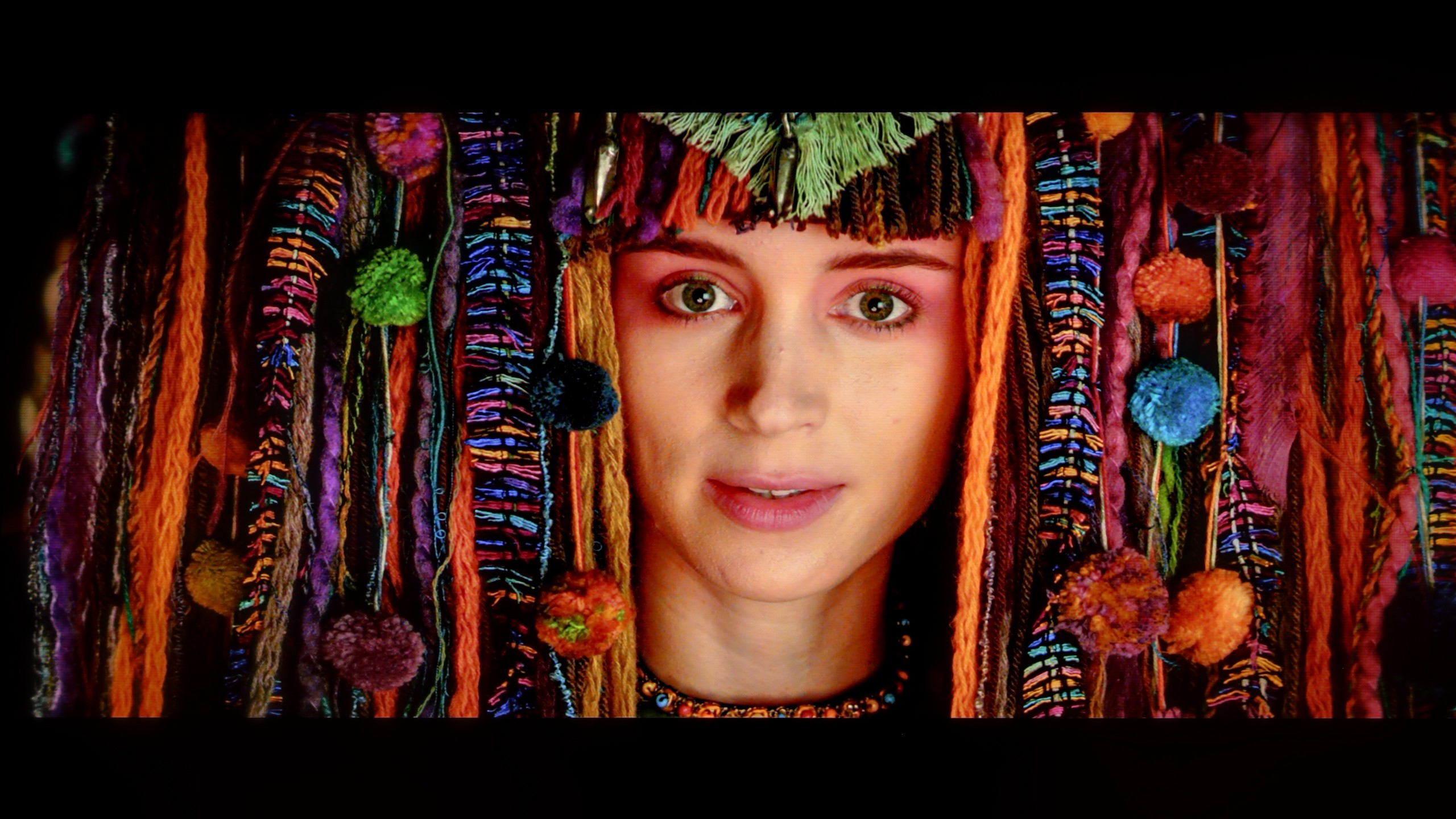
After calibration, the Filmmaker mode can indeed be called worthy of its name. The white balance for both HD and 4K HDR content has been significantly improved, making colours more natural and consistent. The image has gained in realism, and pink hues in HD content have been effectively eliminated, as has the yellowish glow in 4K HDR content. Thanks to calibration, the television now offers much better colour reproduction, positively affecting the viewing experience.
As for brightness, the situation with gamma is now quite the opposite – at the beginning of the graph, there is a noticeable drop, making the darkest details harder to discern. The EOTF curve for 4K HDR content has remained largely unchanged and is still below the reference level, meaning the television still struggles to maintain proper brightness. This is related to the aggressive dimming algorithm that affects the overall brightness of the image. You can see how the television fights to maintain high brightness or perfect black.
Despite the limitations associated with local dimming, the Samsung QN900D has improved colour reproduction quality, as confirmed by the Color Checker test results – the colour samples are now much closer to the targets, making the image more natural and pleasing to the eye.
After calibration, the excessive cooling of the image caused by an overly strong boost of the blue colour was mainly eliminated. The reds have become deeper, and skin tones have taken on a natural, healthy appearance. The actors, who previously seemed "cold," now look much livelier and more convincing on screen. However, one thing has not changed – the analysis of the EOTF curve still shows that the Bravia 8 II has a tendency to brighten the darkest areas of the image. It is difficult to determine whether this is a deliberate method used by the manufacturer or a result of the panel and software design. In practice, this means that scenes which the creators intended to leave in deep darkness can reveal more details than anticipated. Despite this, the image quality after calibration is clearly improved – warm, natural colours and realistic skin tones make viewing on the Bravia 8 II simply more pleasant to the eye.
Smoothness of tonal transitions
8/10
8.5/10





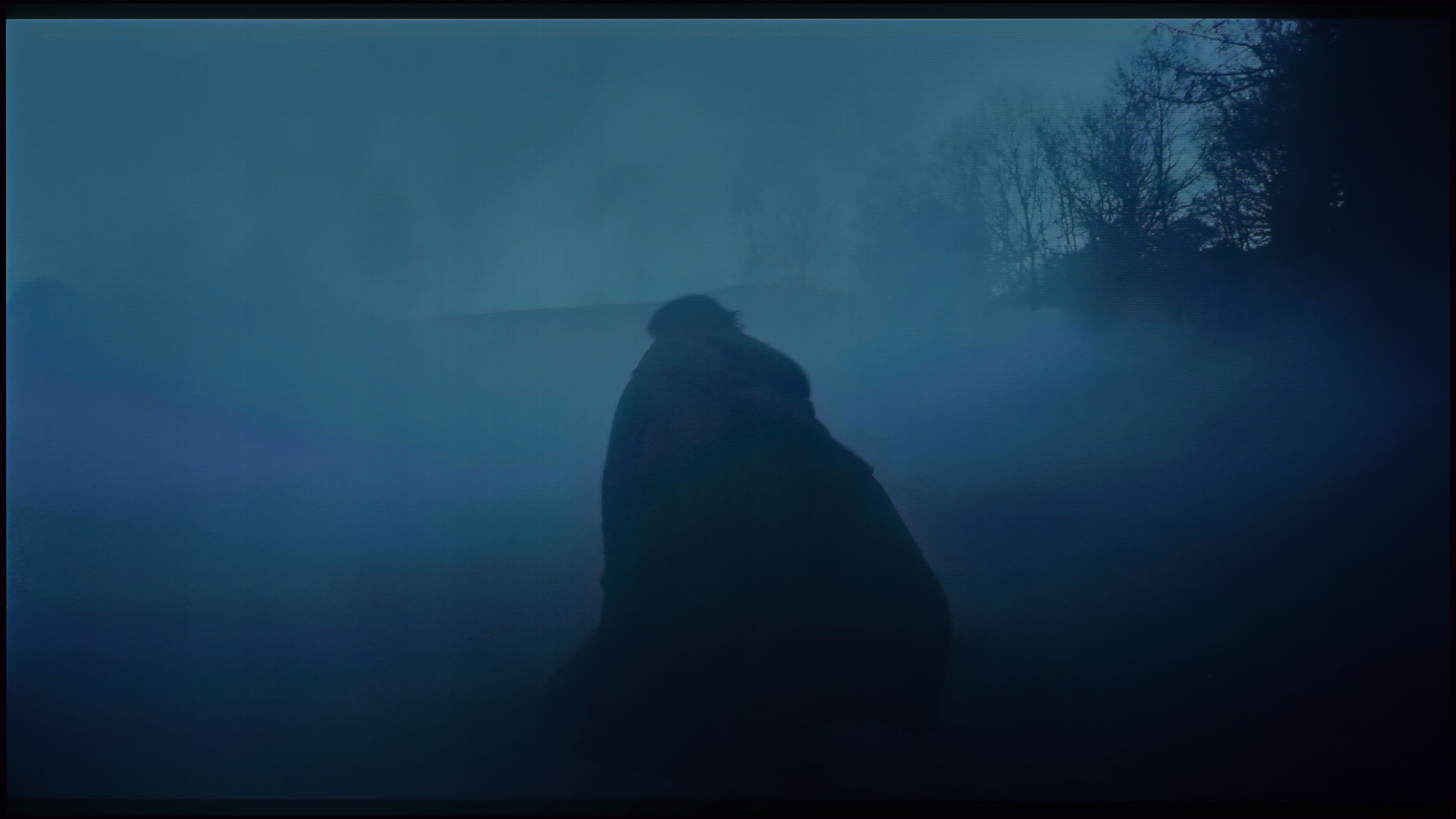






The Samsung QN900D television handles tonal transitions smoothly, deserving a rating of 8/10. Colour gradation is generally good, although not perfect – in darker scenes, certain imperfections may be noticeable to more demanding users. Despite these minor flaws, the effect should satisfy most viewers, providing natural transitions.
The fluidity of tonal transitions in the Sony Bravia 8 II can be described as very good, though with a clear distinction between light and dark materials. In scenes with high luminance, the television performs almost flawlessly – the gradation is smooth, free from visible bands or artifacts, and subtle colour transitions maintain full consistency. This is particularly evident in HDR materials, where bright skies or illuminated shots look nearly perfect – here, the rating could easily be 9.5/10.
The situation looks somewhat different in darker sequences. In night scenes or heavily shadowed ones, especially in test materials, slight issues with the fluidity of gradation can be noticed – transitions become less subtle. Although this is not a level that detracts from the viewing experience, a more discerning eye will catch the difference, especially when compared to absolutely top-tier models on the market. In this category, the rating rather hovers around 7.5/10.
Image scaling and smoothness of tonal transitions
7/10
8.5/10
Smooth transition function

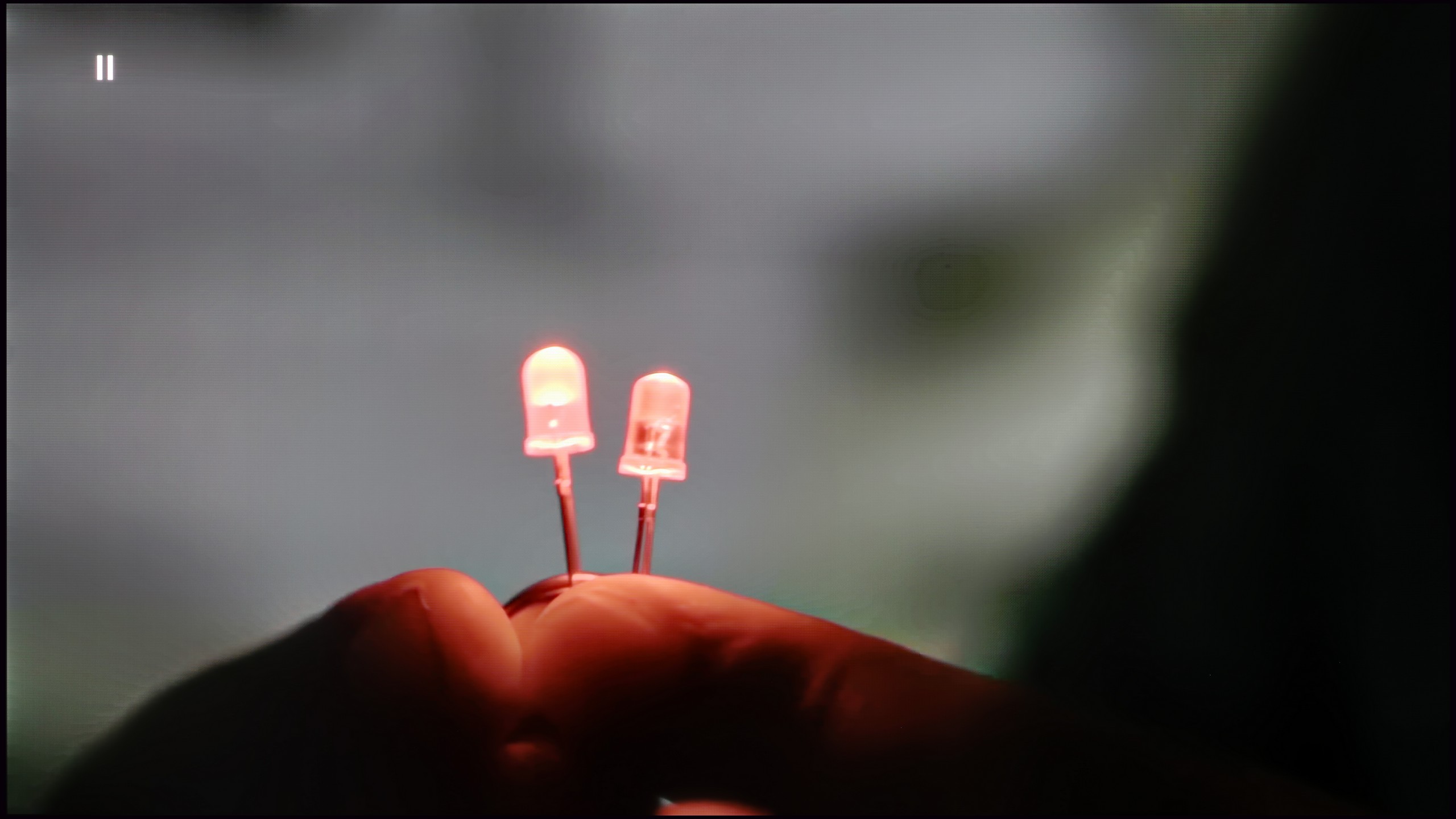
Image without overscan on the SD signal


The fluidity of tonal transitions in lower-quality materials is impressive – the Noise Reduction feature effectively smooths tonal transitions while eliminating film grain. Although the removal of grain is not always desirable, the overall final effect looks very aesthetically pleasing, particularly for those who prefer a cleaner image.
When it comes to upscaling, or image scaling, QN900D shows the enormous potential of the new processor with AI technology. Images and materials in lower resolution are upscaled while preserving many details – for example, a photo of a model looks fantastic, free of unnecessary jagged edges, and the branches in the background are not overly jagged.
Upscaling and digital image processing are a true showcase of the capabilities of the Bravia 8 II. Sony has long been regarded as a master in this field, and here it only reaffirms its reputation. The proprietary XR processor can extract nearly the maximum from lower-resolution materials – whether it's television or an old DVD film, the image appears clearer, with more detail and better depth. Of course, if we feed it exceptionally low-quality material (like our archival photo with the Model), it won't work wonders, but in everyday viewing, it's hard to find fault with it.
The gentle gradation feature also performs excellently. In the "Medium" setting, it effectively smooths tonal transitions, eliminating banding in coloured and grey gradients, while not destroying the film grain or fine details in the image. It is this balance between subtlety and effectiveness that keeps Sony televisions among the best on the market in this category.
Blur and motion smoothness
7.4/10
8.5/10

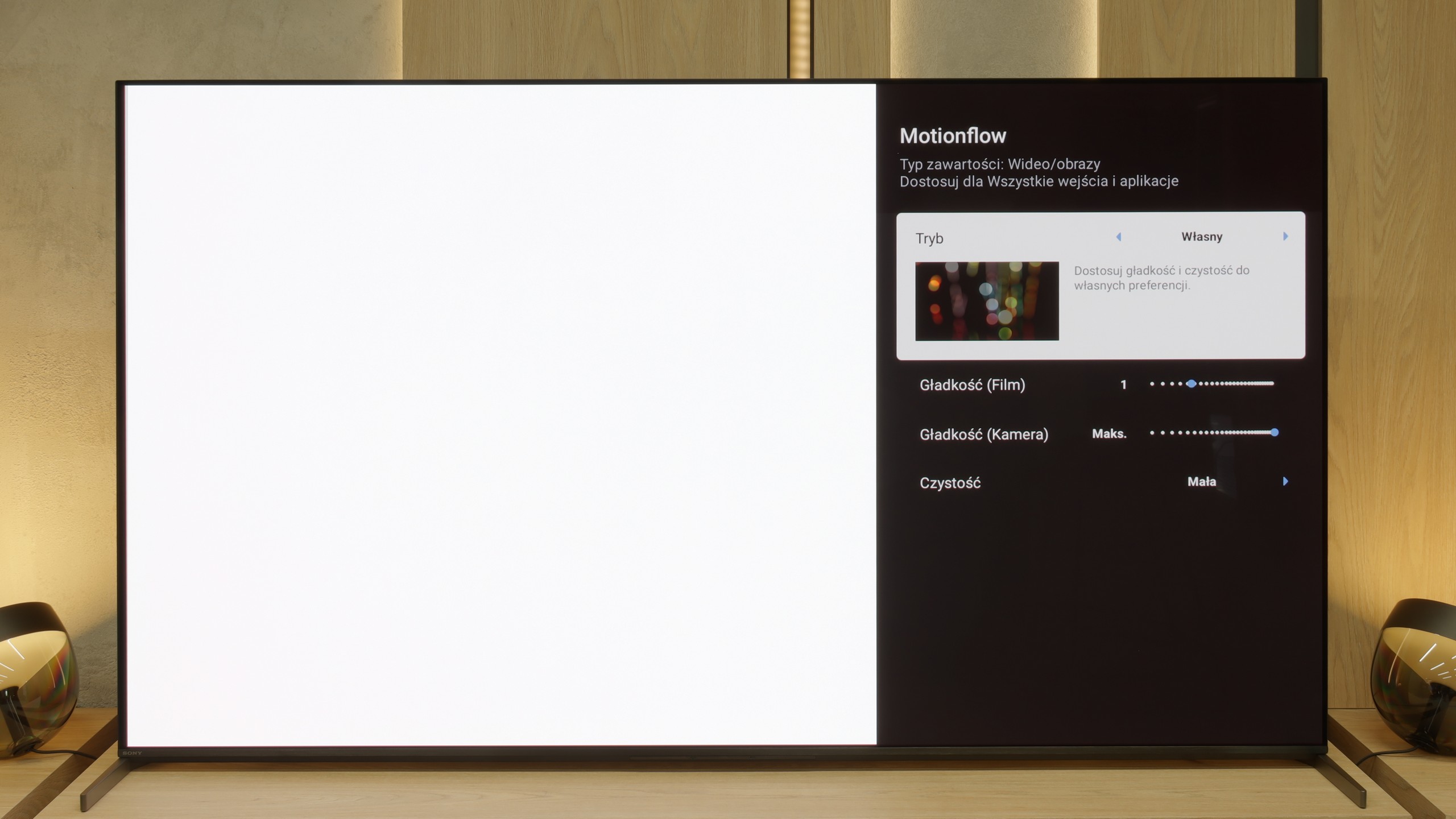
Blur (native resolution, maximum refresh rate):





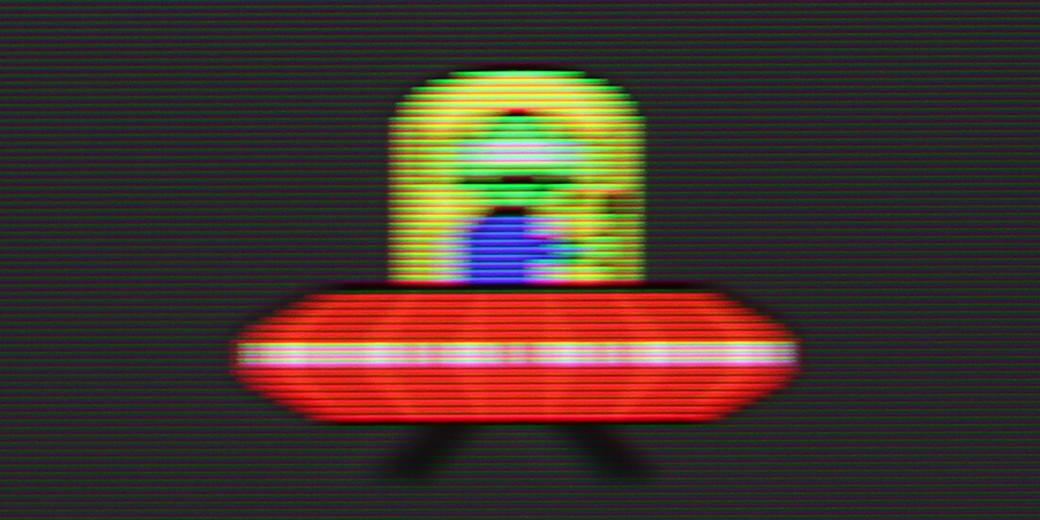
Blur (BFI function enabled):
Image flickers in this mode



Smużenie (2160p 240Hz):



Smużenie (MotionFlow 120Hz):

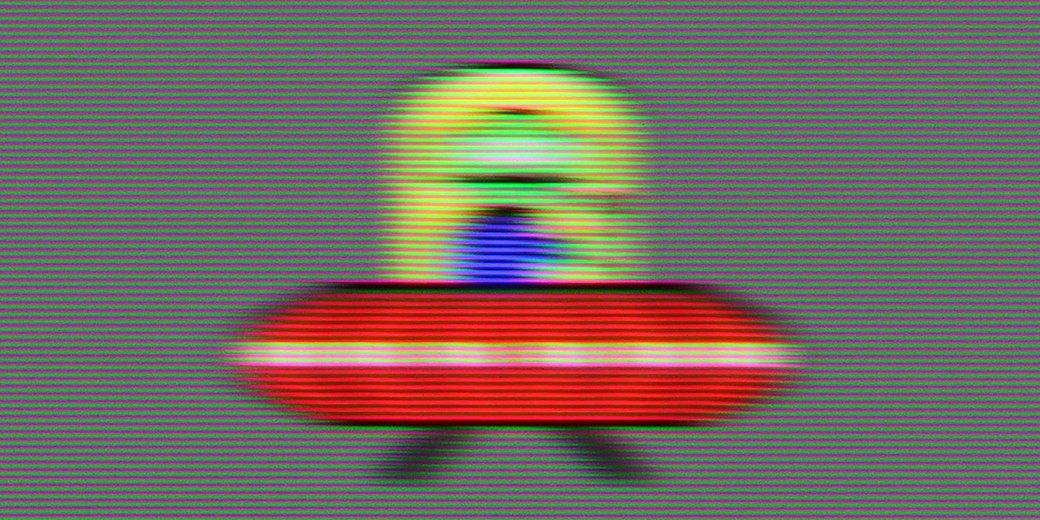
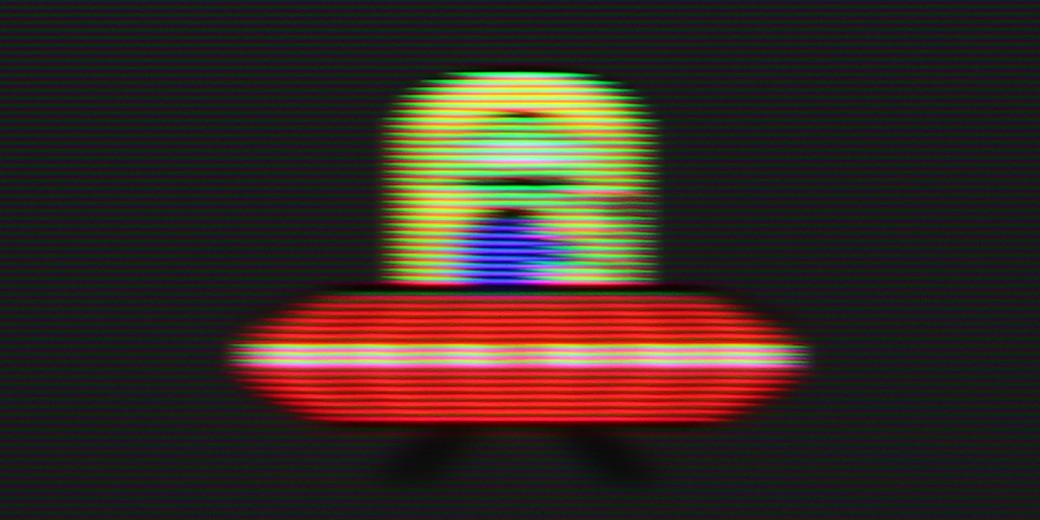
Samsung QN900D is currently the fastest television in the world – literally. A refresh rate of 240 Hz in 4K resolution is an incredible value that PC gamers will surely appreciate. As for cinema fans, they will not be disappointed either – Samsung offers a 10-step clarity scale in the picture settings, allowing for image adjustments. We can choose whether the television should provide a smoother, theatrical effect at the highest settings, or a more cinematic experience, with visible frames, at the lowest settings.
The smoothness of motion is practically a closed topic in the case of the Bravia 8 II. The OLED with a refresh rate of 120 Hz naturally provides a very clear, sharp image in dynamic scenes, so it's hard to complain about anything here. However, one of the best motion smoothing systems on the market truly deserves special praise. They allow precise adjustment of film smoothness to one’s own preferences – from gentle smoothing to almost a “theatrical” effect – without the risk of artificial jumps, tearing of the image, or annoying artifacts. This is one of those features that will be appreciated both during movie screenings and while watching sports.
Console compatibility and gaming features
9.5/10
9.4/10
- ALLM
- VRR
- VRR range48 - 240Hz48 - 120Hz
- Dolby Vision Game Mode
- Correct implementation of HGIG
- 1080p@120Hz
- 1440p@120Hz
- 4K@120Hz
- Game bar

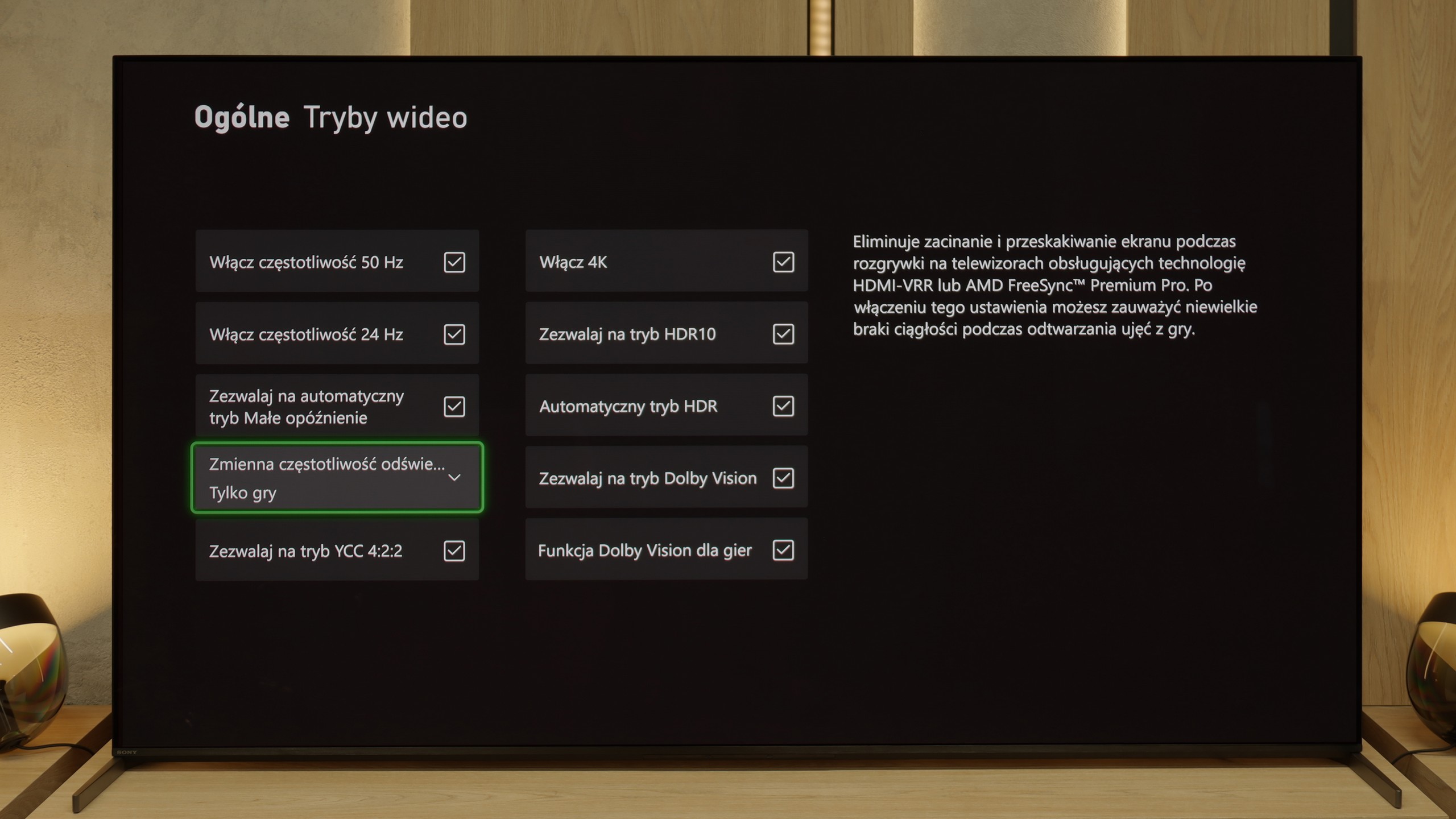



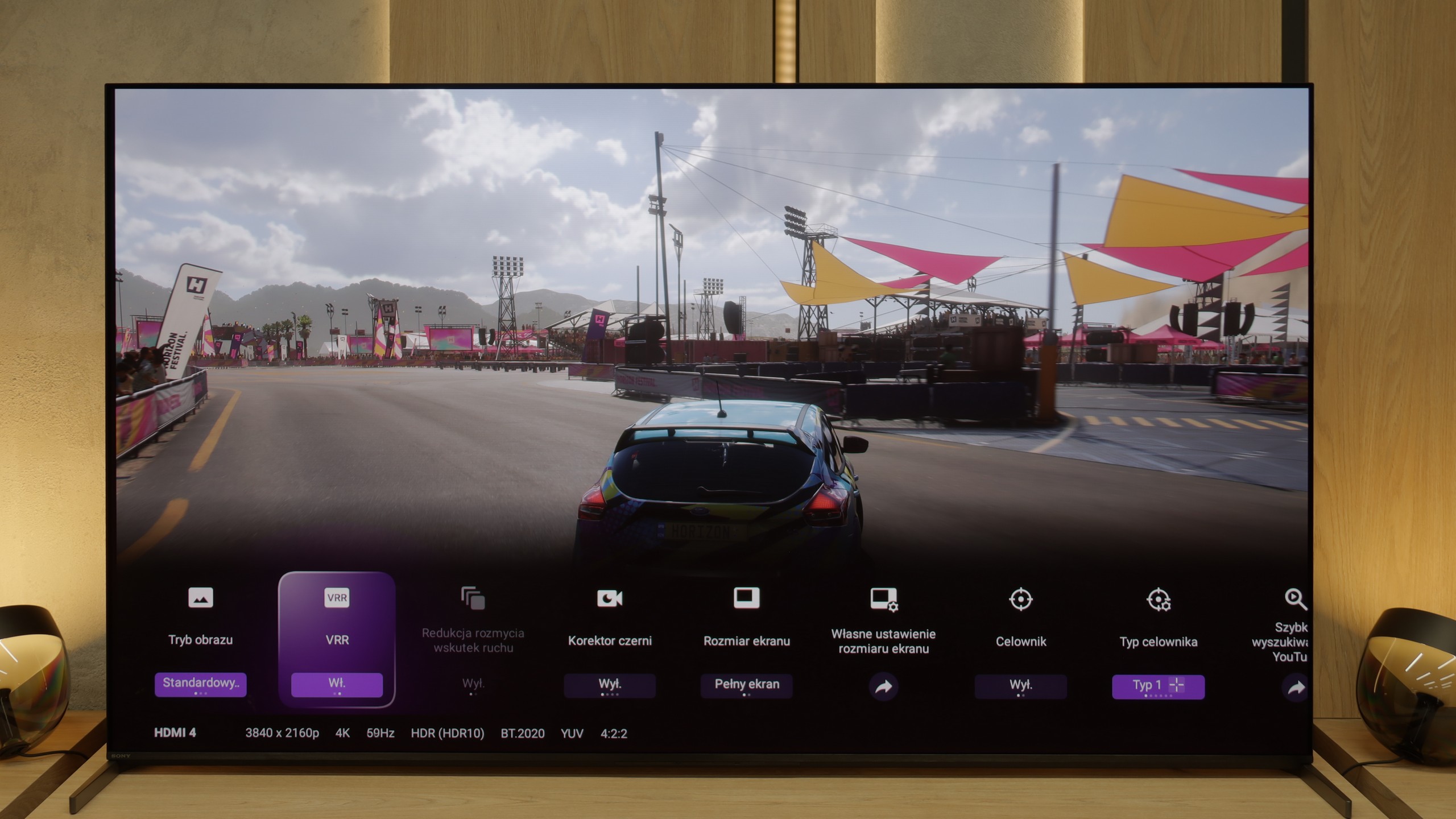

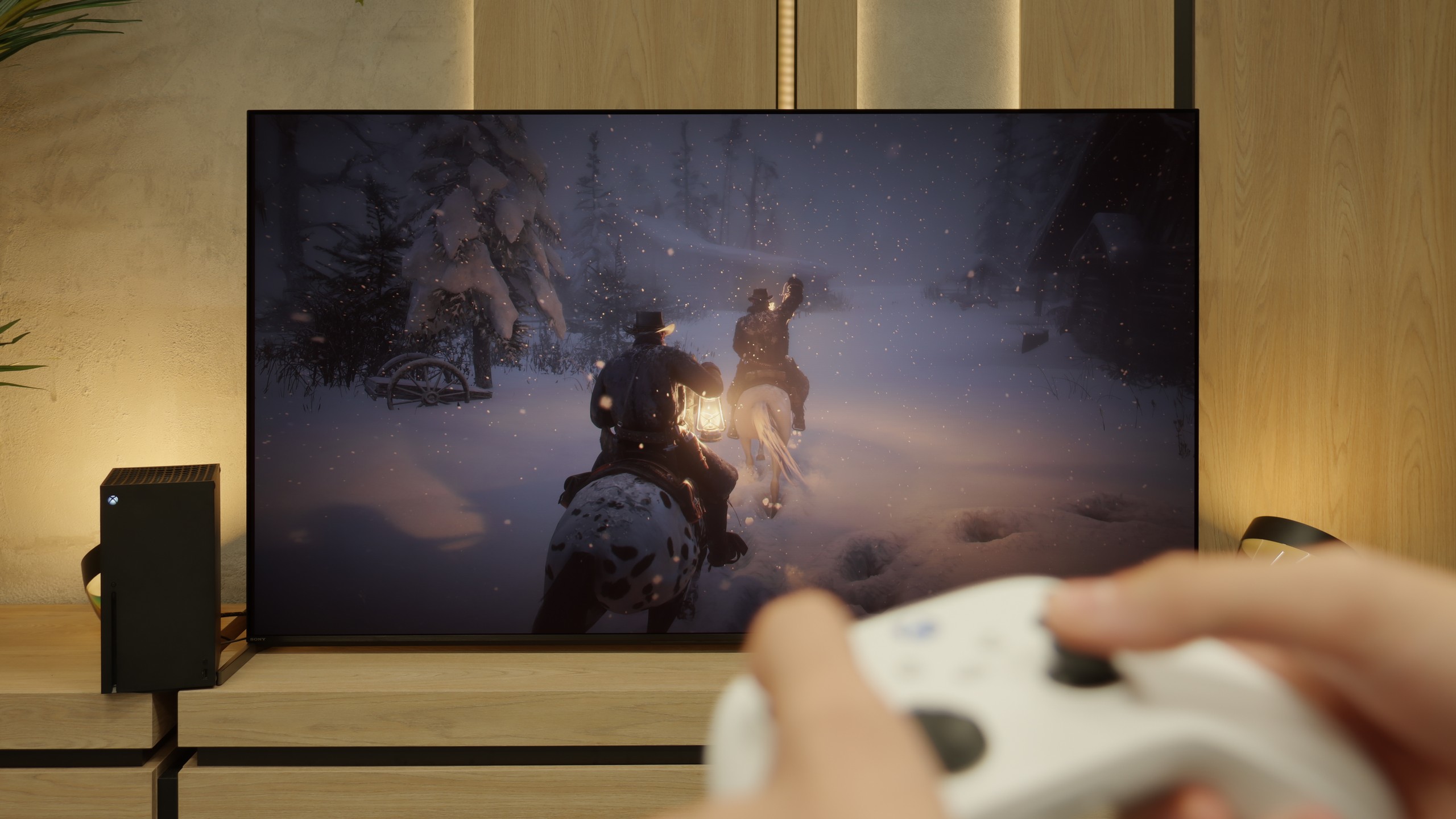
Samsung QN900D is a television that offers excellent compatibility with consoles and a range of features that gamers will appreciate. It has 4 HDMI 2.1 ports, although unfortunately without the full bandwidth of 48 Gb/s. Nevertheless, for the average user, this is more than sufficient. Additionally, the television supports Auto Low Latency Mode (ALLM) and Variable Refresh Rate (VRR), which means a smoother image and no screen tearing during dynamic gameplay. The G-Sync and FreeSync technologies also deserve attention, as they ensure optimal cooperation with consoles and computers equipped with the appropriate graphics cards, minimizing stuttering and providing a smooth image.
One of the unique features available only in Samsung televisions is the Xbox Game Pass app, which allows for game streaming without the need for a console. This is a very convenient solution that lets you enjoy your favourite games without the need to purchase additional hardware. Furthermore, the QN900D has a Game Bar – a special panel that enables quick access to game-related settings, making the configuration of game mode fast and intuitive.
Another interesting feature is a function called Auto Motion Plus Game, which is a special motion smoothing mode that can increase the frame rate (operating at a maximum for a 4K@60Hz signal). Importantly, this does not cause a significant increase in input lag, allowing the player to enjoy both greater image smoothness. All these features make the Samsung QN900D an excellent choice for those looking for a gaming television with the highest possible specifications.
Sony has really learnt its lessons from previous years and in the Bravia 8 II has prepared a package of features for gamers that is hard to describe in any other way than "almost perfect". We have everything you'd expect from equipment of this class – VRR, ALLM, Dolby Vision Gaming mode, HGiG, and even a handy Game Bar that allows you to quickly preview parameters and change settings without leaving the game. It's also worth noting how smoothly and seamlessly these features work – no delays, no strange stutters. You simply start the game, and everything looks as it should. Unfortunately, there are a few "buts". The manufacturer still only provides us with two full-bandwidth HDMI ports, so if someone has a console, PC, and another device such as a soundbar connected via eARC, it becomes a hassle of switching cables. It is also surprising that there is no support for 1440p resolution at 120 Hz – particularly important for Xbox gamers. Overall, however – this is one of those televisions that can easily be placed in the centre of a gaming lounge and enjoyed without significant compromises.
Input lag
9.8/10
9.8/10
SDR
HDR
Dolby Vision
When it comes to signal delay (input lag), Samsung QN900D achieves impressive results. Values below 15 ms are truly excellent, making the television an ideal choice for gamers expecting minimal delays during gameplay. The input lag at 8K resolution is also noteworthy, measuring just 17 ms – this is also a very good result that allows enjoyment of dynamic games at the highest possible resolution without noticeable delays.
The input lag on the Bravia 8 II is a strong point that every gamer will appreciate. With 120 Hz content, the values hover around 10 ms, which places this television among the best – the response is nearly instantaneous, and control in dynamic games remains fully predictable. At 60 Hz, the lag time naturally doubles, but it still remains at a level that can be described as exemplary. Importantly, Sony has done an excellent job with the handling of Dolby Vision mode in games – it operates here exceptionally smoothly and quickly. This is a significant change compared to previous years when Dolby Vision Gaming on televisions of this brand could cause additional lag or minor issues with fluidity. It’s clear now that the manufacturer has refined this element to perfection.
Compatibility with PC
8/10
7.6/10

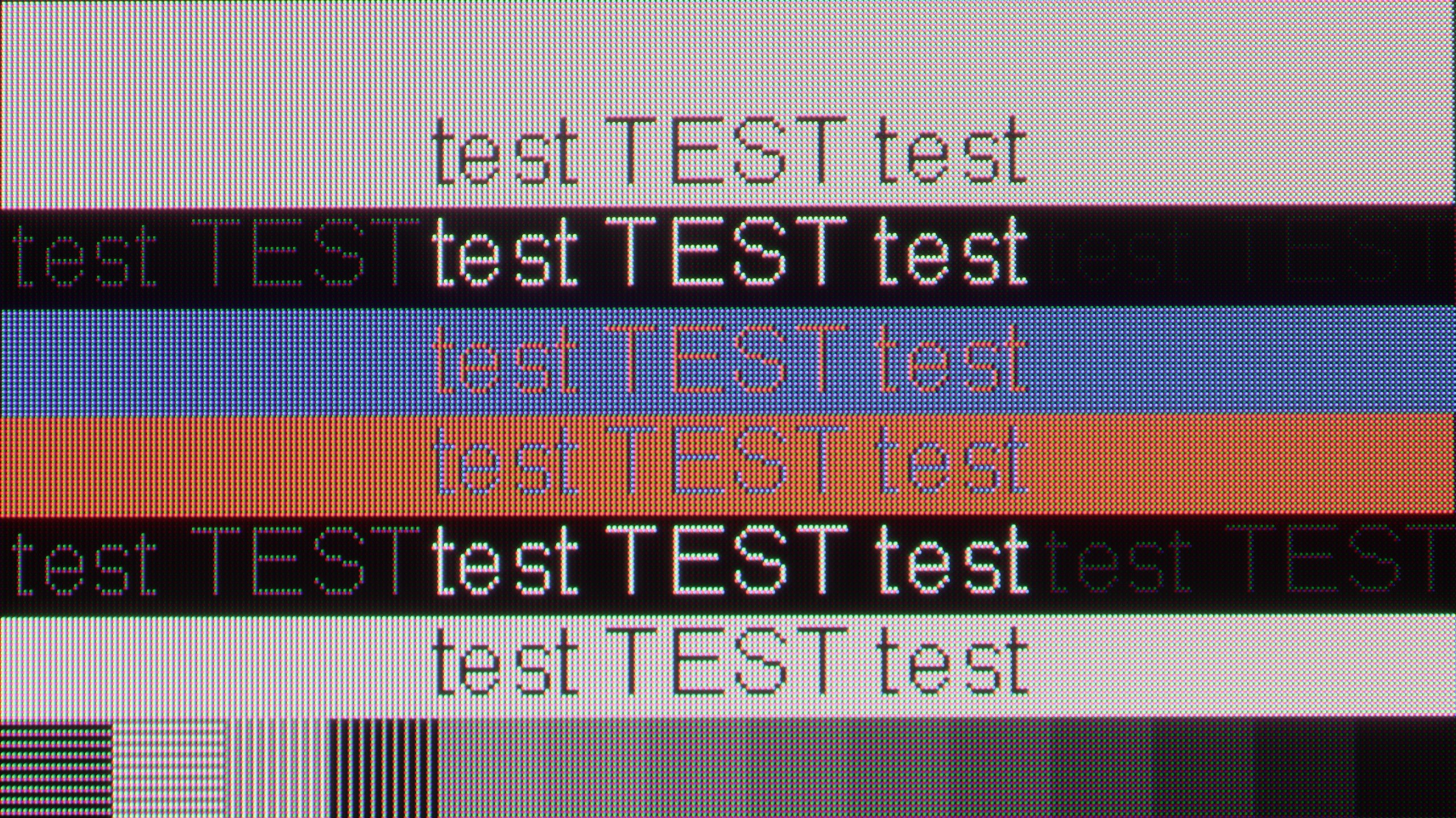
Samsung QN900D offers very good compatibility with computers, making it an excellent choice for users looking for a large screen for work and entertainment. It supports full colour reproduction with Chroma 4:4:4, resulting in better image quality when using text and office applications. The readability of fonts is quite good, especially considering the 8K resolution, which offers an enormous level of detail.
Unfortunately, despite the very high resolution, the television has some issues with bright fonts on a dark background – slight shadows created by subpixels can be noticed. This may not be a key issue, but for more demanding users, it could affect the comfort of use, particularly when working in text applications. Nevertheless, the overall image quality and compatibility with computers are at a high level. It is also worth praising the television for supporting 240Hz at lower resolutions like 4K. This allows high-end PCs to showcase their prowess in gaming.
Compared to last year's A95L, the Bravia 8 II has made a significant leap forward in terms of compatibility with PC computers. The support for 4:4:4 chroma works flawlessly, so text – both regular and very fine – remains sharp and clear. This means that working with documents, spreadsheets, or even editing photos does not strain the eyes and does not require fiddling with settings.
However, there is a certain sense of dissatisfaction. One would expect additional gaming mode with refresh rates above 120 Hz in a television of this class. After all, in the price segment this model occupies (and even in lower ones), 165 Hz and even 240 Hz are becoming increasingly common. This option is missing here, which may be a slight disappointment for some PC enthusiasts. Fortunately, thanks to its low input lag and support for G-Sync, the Bravia 8 II can still immerse players in PC gaming without feelings of delay or image tearing. It is equipment that performs well not only in the living room but also on the player's desk.
Viewing angles
7.8/10
9.8/10
The viewing angles on the QN900D television are very good, despite the use of a VA panel. Thanks to a special coating that broadens the viewing angles, the picture remains flawless even when viewed at an angle. This is particularly important when there are more people in the room – every viewer, regardless of their seating position, can enjoy excellent picture quality, without distortion or loss of colours. This makes the Samsung QN900D a great choice for watching both films and sports broadcasts with a larger group.
In this respect, the Bravia 8 II is at the absolute top of the market. Thanks to the use of a QD-OLED panel, the television maintains full colour depth and high contrast even when viewed from a large angle. This is a distinct advantage over constructions based on WOLED panels, which can slightly lose saturation and detail at more extreme viewer positions. Like its competitor, the Samsung S95F, the Bravia 8 II performs almost flawlessly in this category – regardless of whether we are watching a film from the sofa, from a chair nearby, or standing in the corner of the room, the image remains true to the original.
TV efficiency during daytime
5/10
5.6/10



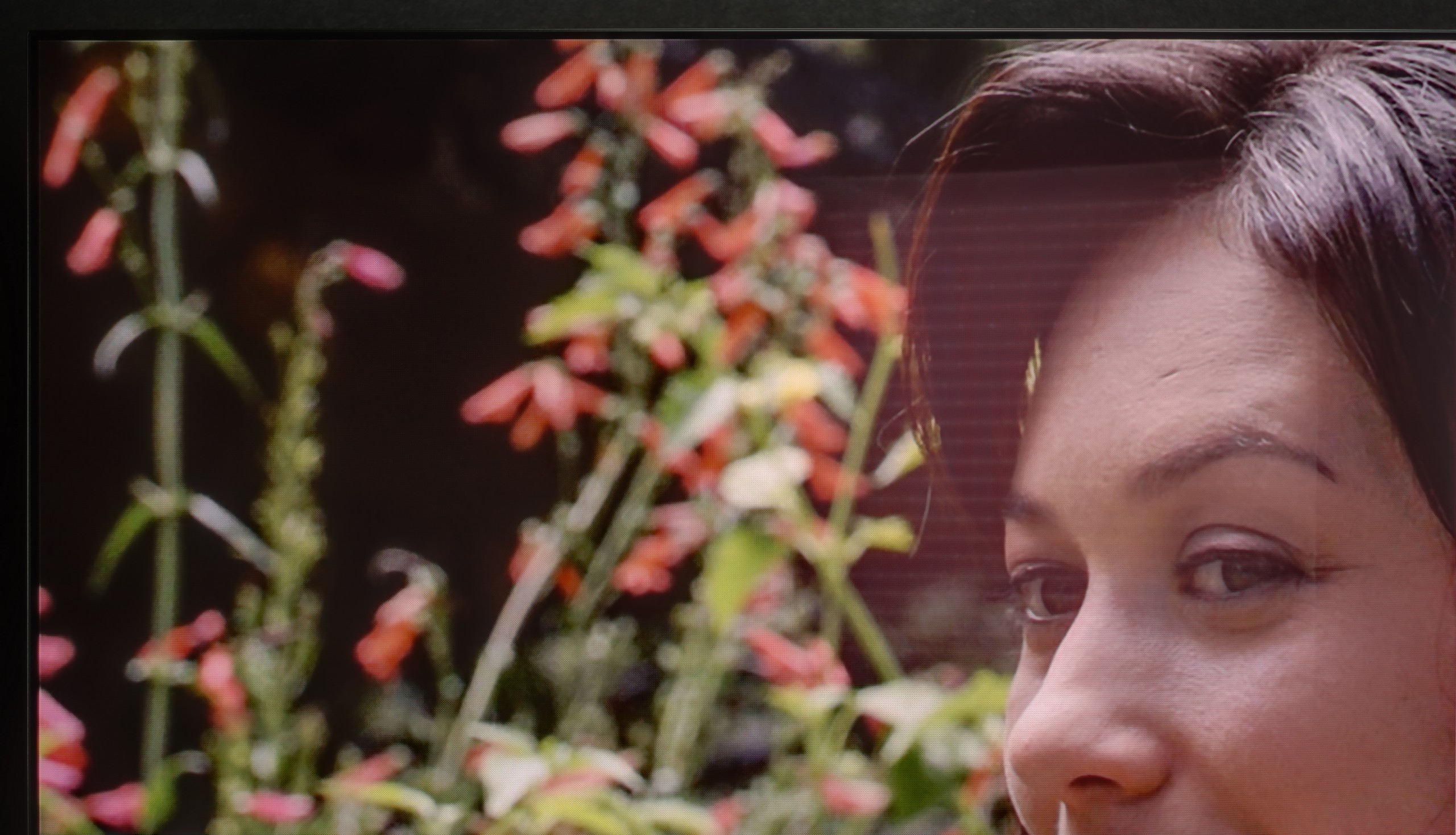
Matrix brightness
Average luminance SDR
Sony Bravia 8 MK2: 419 cd/m2
Samsung QN900D Neo QLED 8K: 387 cd/m2
When it comes to the performance of the Samsung QN900D television in daylight conditions, it is generally average. The television has a special anti-reflective coating that helps reduce glare; however, due to the VA panel and the layer that widens the viewing angles, light reflections are heavily scattered horizontally - resembling the colours of a rainbow. This results in a loss of image vibrancy, especially in bright rooms where intense light sources can negatively affect the quality of the displayed image.
For a television of this class, we expected a better performance. An average SDR brightness of around 400 nits is definitely too little to speak of great visibility in a sunlit living room. In very demanding lighting conditions, we will be forced to reach for curtains or… move the television to another location. As with every QD-OLED panel, the black levels during the day are not perfectly black – they have a slight cherry tint. Fortunately, this technology also has its advantages over WOLED panels – it effectively reduces reflections, making direct light glare less bothersome. Despite this advantage, the overall efficiency of the Bravia 8 II in a bright room should be assessed as average, particularly in the context of the high-class equipment to which this model belongs.
Details about the matrix
Subpixel Structure:

Panel uniformity:

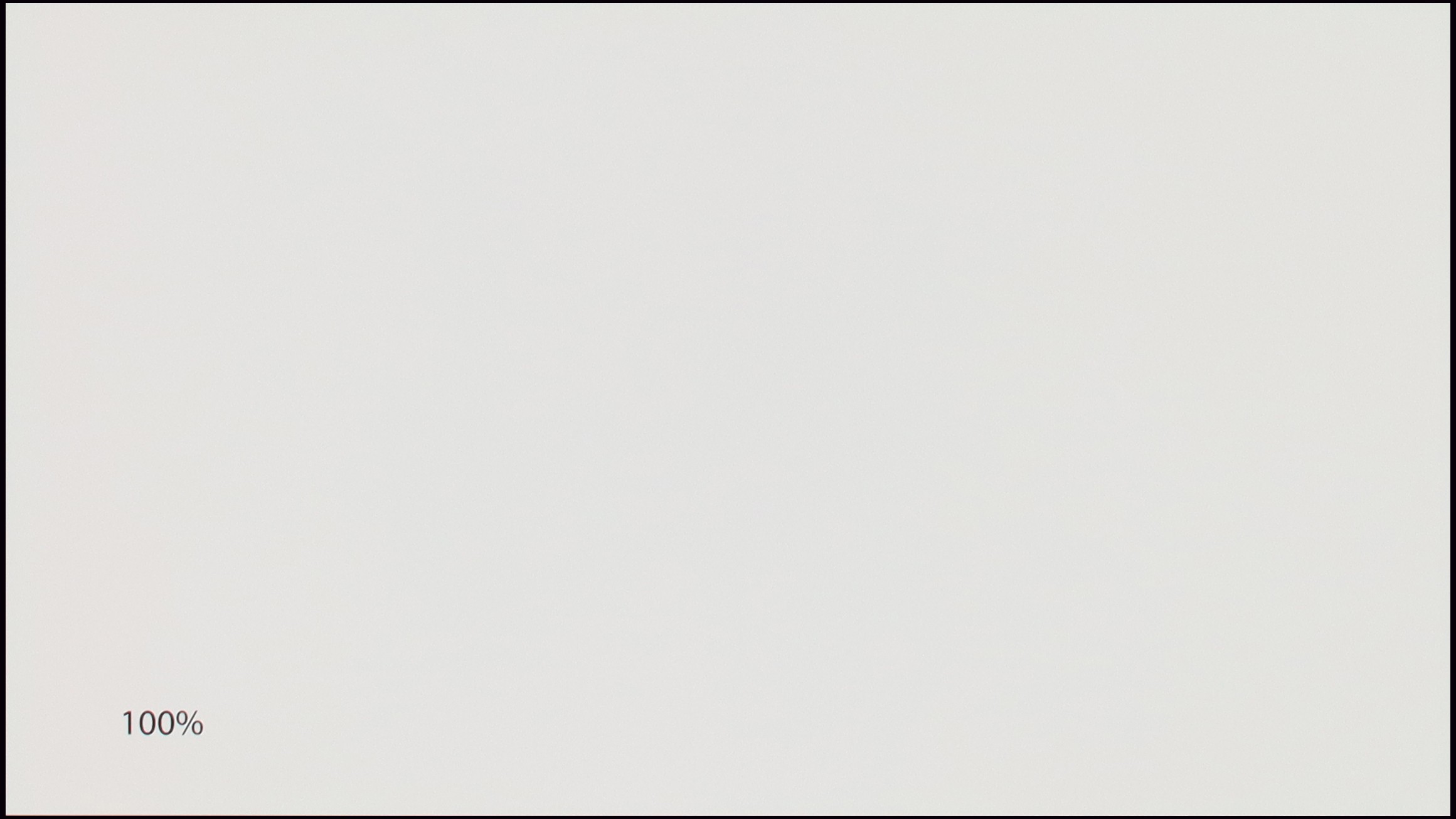
Samsung QN900D Neo QLED 8K
Sony Bravia 8 MK2
TV features
7.7/10
8.9/10
- HDMI inputs0 x HDMI 2.0, 4 x HDMI 2.1 40Gbps2 x HDMI 2.0, 2 x HDMI 2.1 48Gbps
- OutputsToslink (Optical audio), eARC (HDMI), ARC (HDMI)Toslink (Optical audio), eARC (HDMI), ARC (HDMI)
- Network InterfacesWi-Fi 2.4GHz, Wi-Fi 5GHz, Ethernet (LAN) 100MbpsWi-Fi 2.4GHz, Wi-Fi 5GHz, Ethernet (LAN) 100Mbps
- TV receptionDVB-T, DVB-T2, DVB-S, DVB-S2, DVB-CDVB-T, DVB-T2, DVB-S, DVB-S2, DVB-C
Classic features:
- Recording to USB (terrestrial TV)
- Recording programming
- Picture in Picture (PiP)
- RF remote control (no need to aim at the screen)
- Backlit remote control
- Teletext
- Audio only mode
- Possibility to connect Bluetooth headphones to the TV
- Possibility to simultaneously use Bluetooth headphones and the TV speaker
Smart features:
- AirPlay
- Screen mirroring (Windows Miracast)
- Wyszukiwanie głosowe
- Voice search in native language
- Ability to connect a keyboard and mouse





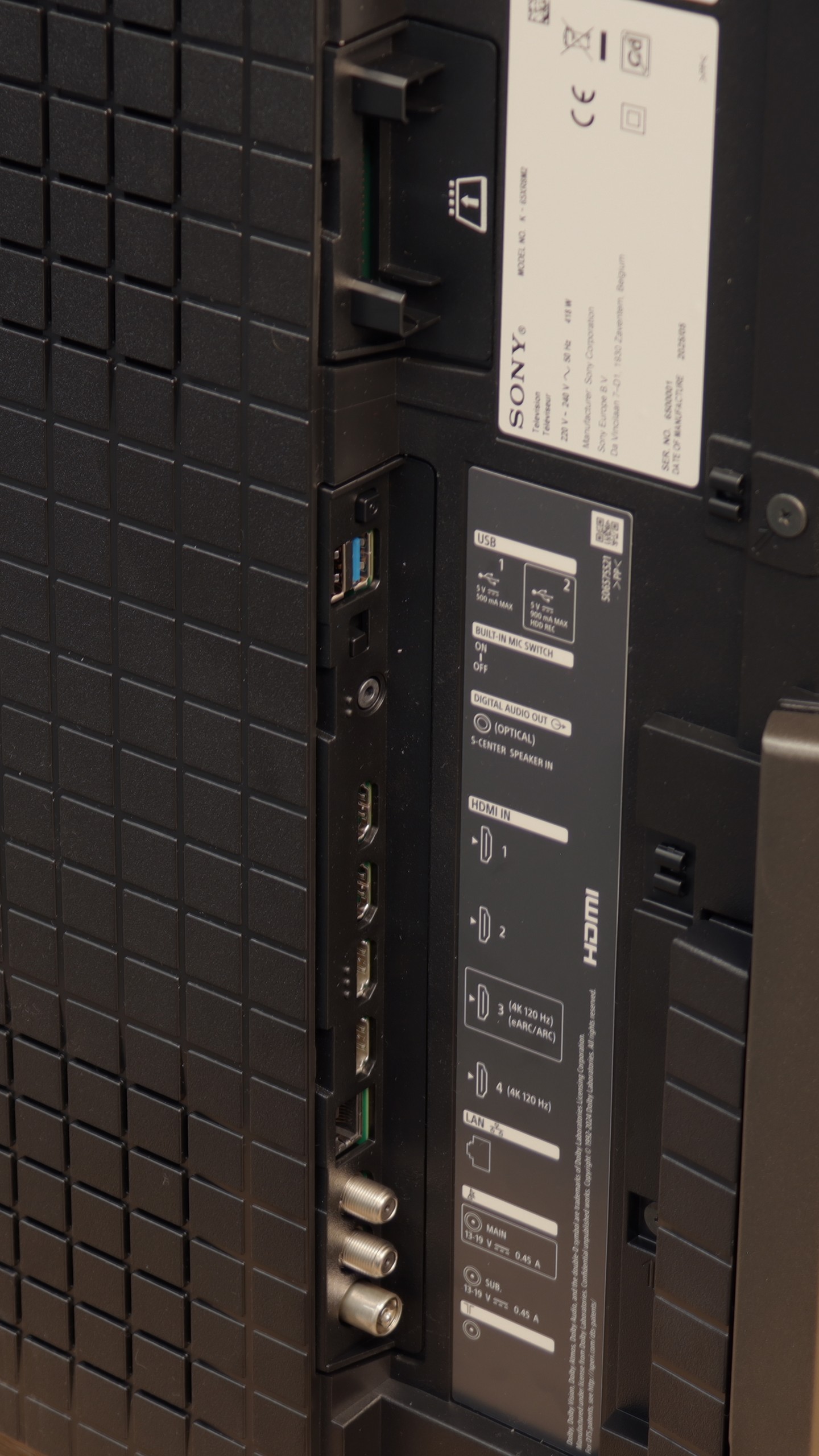
The Tizen system that powers the Samsung QN900D television offers excellent integration with other devices, allowing for convenient use of numerous applications, including AirPlay. Users also have the option to control other equipment via the SmartThings app. The television also works with lighting systems such as Philips Hue, enabling the creation of a moody atmosphere during film screenings.
In everyday use, the QN900D performs exceptionally well. The solar remote can control other devices, such as set-top boxes, making the lack of recording functionality less of an issue. Additionally, the television features a Picture-in-Picture (PiP) function, and with its 8K resolution, it is even possible to split the screen into four parts, making it exceptionally functional and useful for watching multiple programmes simultaneously as well as for effective work with various image sources.
The Samsung QN900D also stands out with its modern appearance. Its slim profile makes it the thinnest Mini LED television on the market, and the use of the One Connect module allows for neat cable management, so the area around the television looks tidy and elegant. The central stand adds lightness and creates the impression that the television is floating in the air, giving it a unique character. Additionally, the Ambient Mode feature allows for the display of decorative graphics or the adjustment of the image to fit the interior, making the television an integral part of the room, even when it is switched off.
SONY Bravia 8 II – Features of the Television
Bravia 8 II has a lot to offer to those who use a television in a traditional way. In the package, we receive two remote controls – one modern, minimalist "smart" and the other, traditional, numeric, designed for those who treat the television simply... like a television 😉. Sony also allows for programming and recording television broadcasts to external memory, e.g. a USB drive. Features such as EPG or teletext are hardly worth mentioning – they are obvious.
SONY Bravia 8 II – GoogleTV
When it comes to smart functions, the biggest advantage is the Google TV system, which we believe Sony has refined the best on the market among all manufacturers. Although the system can be demanding in terms of hardware, it runs very smoothly on the Bravia 8 II. Google TV also offers a huge selection of applications, which is another strong point. There are also exclusive features that are hard to find with competitors – including the ability to play remotely on your own PlayStation console or access to the private film library Bravia Core, available exclusively on Sony televisions. In short – a complete package of possibilities.
Playing files from USB
9/10
8.9/10
Supported photo formats:
Maximum photo resolution:

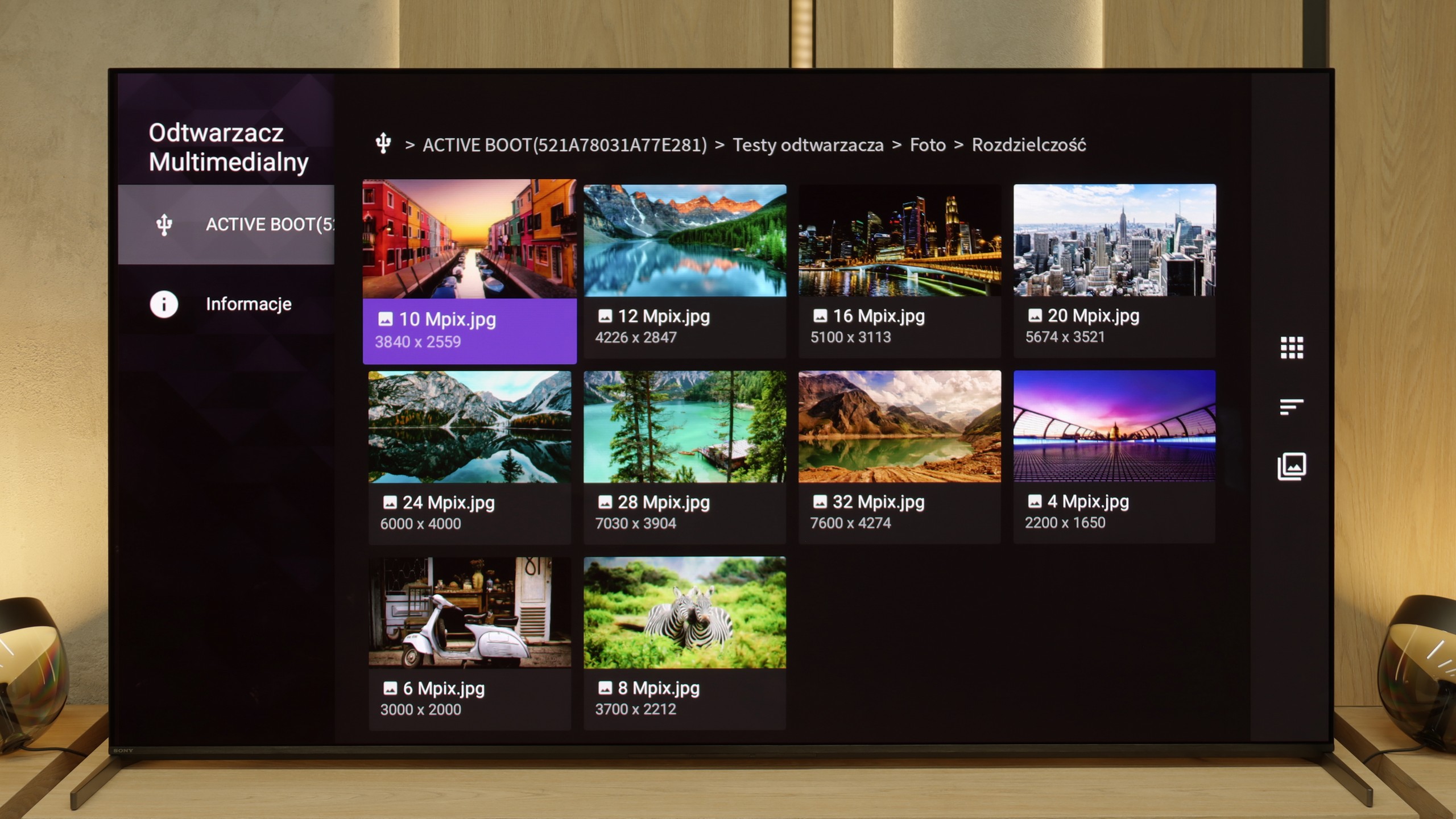
QN900D Samsung plays most popular video and audio formats without any issues. The resolution of images is also not a challenge for it; however, the television has difficulty opening less common image formats, including Apple's HEIC format.
The Bravia 8 II performs very well when it comes to media playback – the built-in player handles virtually everything you would expect. Admittedly, there are a few formats that it does not support, but this is not a serious issue. The biggest advantage is that, thanks to the Google TV system, we are not limited solely to the default player. At any time, we can install an alternative application that can handle files that the built-in Sony software struggles with. As a result, the television becomes a universal multimedia hub, ready to support almost any format.
Apps
8.7/10
9.6/10














































Sound
7.4/10
8.5/10
- Subjective sound quality:7.4/108.5/10
- Dolby Digital Plus 7.1:
- Dolby True HD 7.1:
- Dolby Atmos in Dolby Digital Plus (JOC):
- Dolby Atmos in Dolby True HD:
- DTS:X in DTS-HD MA:
- DTS-HD Master Audio:
Television Samsung QN900D, equipped with an audio system with a power of 90 W in a 6.2.4 channel configuration. Despite its slim casing, the sound is clear and spacious, which is further supported by Dolby Atmos technology, providing immersive audio experiences. Unfortunately, like many other Samsung televisions, the QN900D does not support audio tracks in DTS format, which may be significant for home cinema users.
In terms of sound, the Bravia 8 II is absolutely top-notch in the world of televisions. Sony once again proves that their Acoustic Surface technology is not a marketing gimmick, but a real asset – the speakers hidden behind the screen make the entire panel act as a membrane. The sound stage is wide, dialogues sound exceptionally clear, and the audio follows the action on the screen precisely. It's one of the few televisions for which you can really forgo an additional soundbar. (Of course, the basic one). Moreover, Sony hasn't forgotten about the formats that the competition is slowly leaving behind – full DTS support is a nod to cinephiles who want to extract the maximum experience from films and series recorded on physical media.


